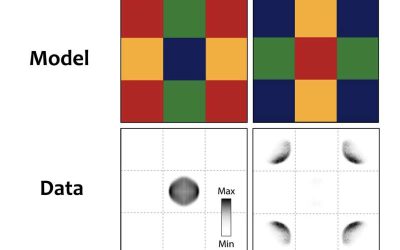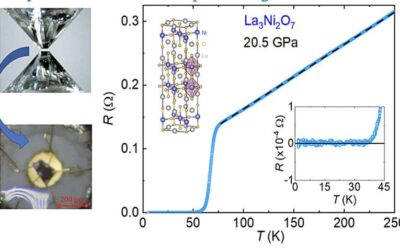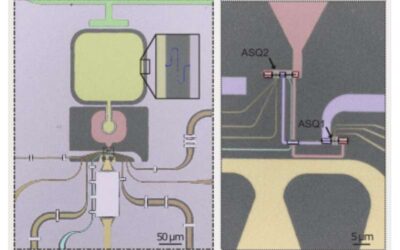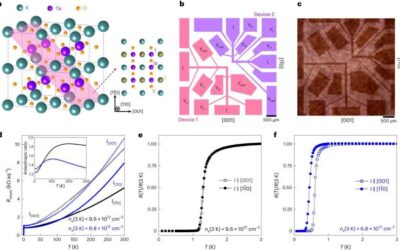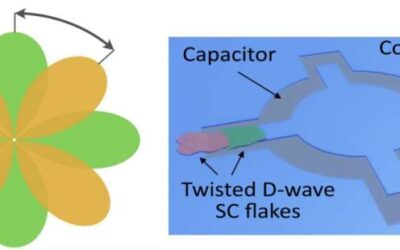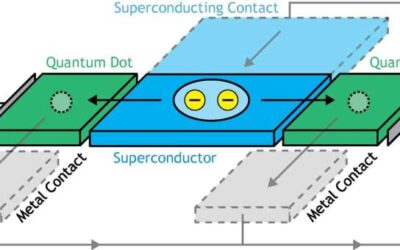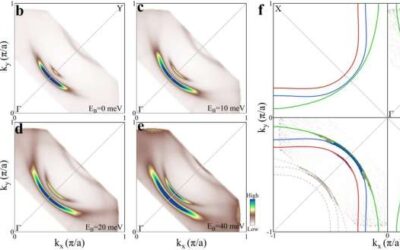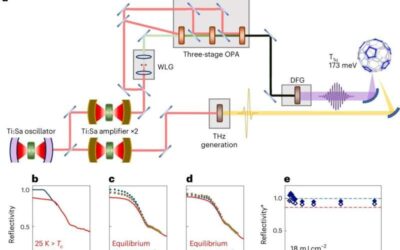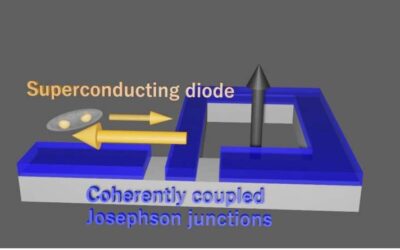Dark states are quantum states in which a system does not interact with external fields, such as light (i.e., photons) or electromagnetic fields. These states, which generally occur due to interferences between the pathways through which a system interacts with an...
Superperconductivity
A high-temperature superconductor with zero resistance that exhibits strange metal behavior
Researchers at Zhejiang University and Sun Yat-Sen University have gathered evidence of high-temperature superconductivity with zero resistance and strange metal behavior in a material identified in their previous studies.
The tunable coupling of two distant superconducting spin qubits
Quantum computers, computing devices that leverage the principles of quantum mechanics, could outperform classical computing on some complex optimization and processing tasks. In quantum computers, classical units of information (bits), which can either have a value...
The spontaneous emergence of 1D superconducting stripes at a 2D interface in an oxide heterostructure
Unconventional superconducting states are states of superconductivity rooted in physical processes that do not conform with the conventional theory of superconductivity, namely Bardeen, Cooper and Schrieffer (BCS) theory. These states are characterized by close...
Flowermon: A superconducting qubit based on twisted cuprate van der Waals heterostructures
Quantum technology could outperform conventional computers on some advanced optimization and computational tasks. In recent years, physicists have been working to identify new strategies to create quantum systems and promising qubits (i.e., basic units of information...
The controllable splitting of a single Cooper pair in a hybrid quantum dot system
Cooper pairs are pairs of electrons in superconducting materials that are bound to each other at low temperatures. These electron pairs are at the root of superconductivity, a state where materials have zero resistance at low temperatures due to quantum effects. As...
Study reveals the origin of high superconducting critical temperatures in trilayer cuprates
High-temperature cuprate superconductors are a broad class of materials that exhibit some unique characteristics. Due to their distinctive properties, these materials exhibit the highest superconducting temperatures reported to date under ambient pressure.
A strategy to enhance the light-driven superconductivity of K₃C₆₀
Superconductivity is the ability of some materials to conduct a direct electrical current (DC) with almost no resistance. This property is highly sought after and favorable for various technological applications, as it could boost the performance of different...
The superconducting diode effect in a device based on coupled Josephson junctions
The so-called superconducting (SC) diode effect is an interesting nonreciprocal phenomenon, occurring when a material is SC in one direction and resistive in the other. This effect has been the focus of numerous physics studies, as its observation and reliable control...
Researchers observe ubiquitous superconductive diode effect in thin superconducting films
The so-called superconducting (SC) diode effect has recently attracted significant attention within the physics research community, due to its potential value for developing new technologies. This effect provides a key example of nonreciprocal superconductivity, as...

